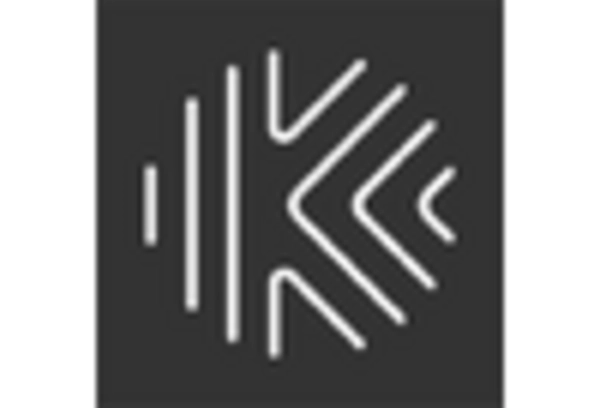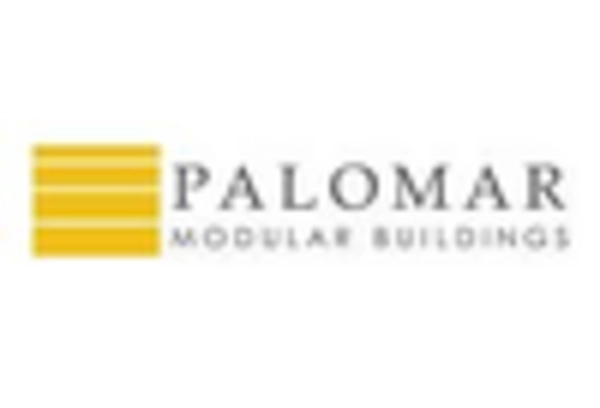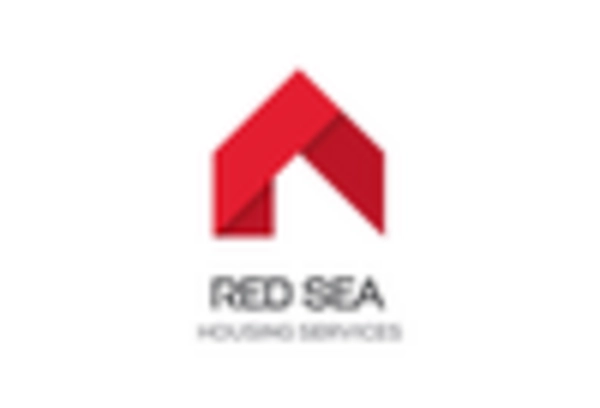Rising Urbanization Trends
Urbanization is a driving force behind the growth of the prefabricated buildings market. As more individuals migrate to urban areas in search of employment and better living conditions, the demand for housing and commercial spaces has surged. The US Census Bureau indicates that urban populations are projected to increase by 10% over the next decade. This trend places immense pressure on the construction industry to deliver efficient and sustainable housing solutions. Prefabricated buildings, with their ability to be produced quickly and efficiently, are well-positioned to meet this demand. Furthermore, these structures can be designed to maximize space utilization, making them ideal for densely populated urban environments. The interplay between urbanization and the prefabricated buildings market is likely to shape the landscape of future construction projects.
Cost Efficiency in Construction
The prefabricated buildings market is experiencing a notable shift towards cost efficiency, driven by the rising demand for affordable housing solutions. Prefabricated structures often require less labor and time to assemble, which can lead to a reduction in overall construction costs. In the US, the average cost of traditional construction has been rising, with estimates indicating an increase of approximately 5% annually. In contrast, prefabricated buildings can reduce costs by up to 20%, making them an attractive option for developers and homeowners alike. This cost advantage is particularly appealing in urban areas where land prices are escalating. As the market continues to evolve, the emphasis on cost efficiency is likely to play a pivotal role in shaping the future of the prefabricated buildings market.
Increased Demand for Rapid Construction
The urgency for rapid construction solutions is a significant driver in the prefabricated buildings market. With the growing need for quick deployment of residential and commercial spaces, prefabricated buildings offer a viable solution. The construction industry in the US has faced challenges related to labor shortages and project delays, which have prompted stakeholders to seek faster alternatives. Prefabricated buildings can be manufactured off-site and assembled on-site in a fraction of the time compared to traditional methods. Reports suggest that projects utilizing prefabricated components can be completed 30% faster, addressing the pressing need for timely construction. This demand for speed is likely to continue influencing the prefabricated buildings market, as developers strive to meet the expectations of clients and regulatory timelines.
Environmental Considerations and Waste Reduction
Environmental sustainability is becoming increasingly important in the construction sector, influencing the prefabricated buildings market. The construction industry is known for generating substantial waste, with estimates suggesting that it accounts for nearly 40% of total waste in the US. Prefabricated buildings offer a solution by minimizing waste through controlled manufacturing processes. By producing components in a factory setting, excess materials can be recycled or reused, leading to a reduction in overall waste. Additionally, these buildings can be designed to be energy-efficient, further appealing to environmentally conscious consumers. As awareness of environmental issues continues to grow, the prefabricated buildings market is likely to benefit from this shift towards sustainable construction practices.
Technological Integration in Design and Manufacturing
The integration of advanced technologies in the design and manufacturing processes is a key driver of the prefabricated buildings market. Innovations such as Building Information Modeling (BIM) and 3D printing are revolutionizing how prefabricated structures are conceived and constructed. These technologies enable architects and engineers to create highly detailed and efficient designs, reducing errors and improving overall project outcomes. In the US, the adoption of such technologies has been increasing, with a reported growth rate of 15% in the use of BIM in construction projects. This technological advancement not only enhances the quality of prefabricated buildings but also streamlines the production process, making it more cost-effective. As the industry continues to embrace these innovations, the prefabricated buildings market is expected to expand significantly.

















Leave a Comment